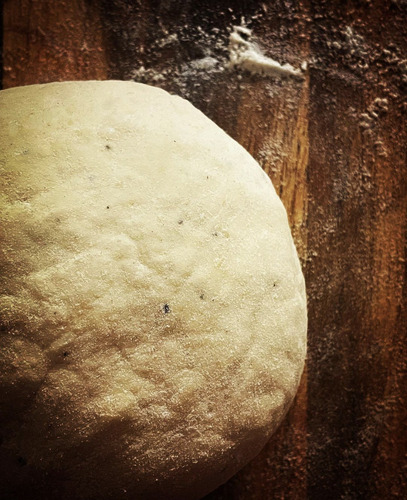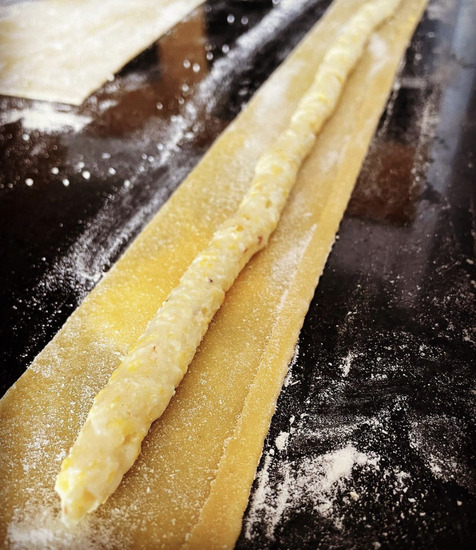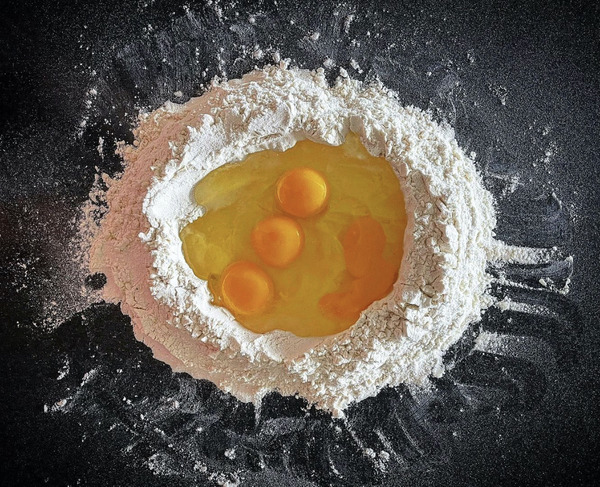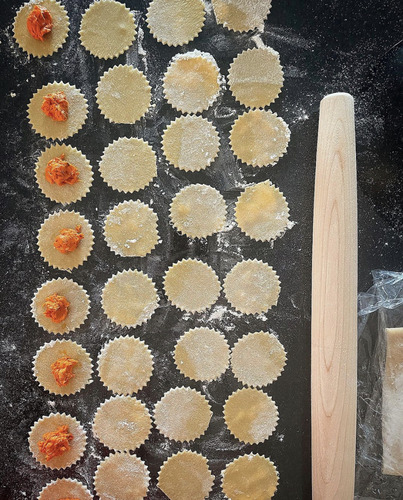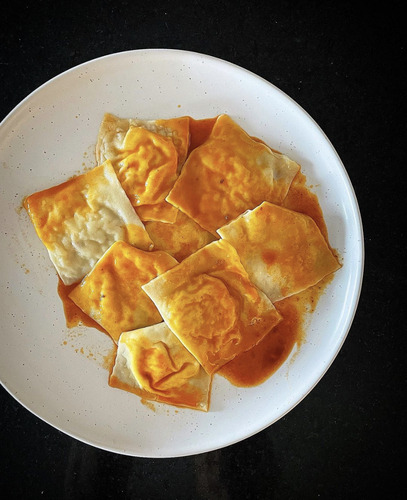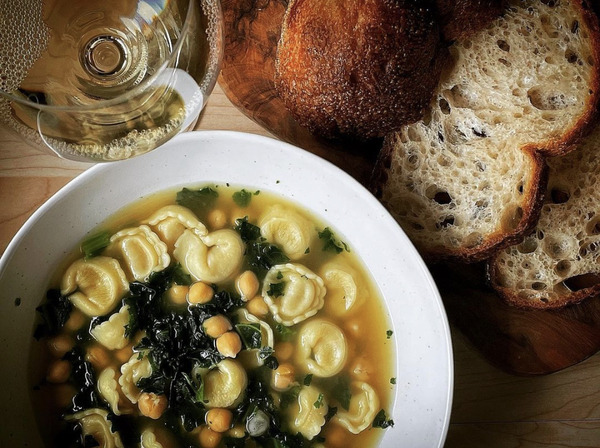The Best Pasta Dough Recipe

The only one you will ever need.
by Erin Henderson
This recipe comes from the first pasta making class I ever took (there’s been a few more since then, including one in Bologna, Italy.)
In my mind Ema, my esteemed instructor at George Brown College in Toronto, is absolutely unsurpassed in her skill. Her recipes are faultless, as is her generosity in sharing them.
In the years since that course, I’ve made this recipe countless times. I have never been disappointed in the outcome. It’s delicious, manageable for most cooks, and holds up to both cooking immediately and freezing for future.
Why Mess with a Good Thing?
I’ve tried other promising pasta dough recipes from well-established and revered, world-famous chefs.
After throwing out the hardened lump of a dozen egg yolks and 500 grams of precious 00 flour, I don’t need the expensive lesson more than once or twice.
Perhaps it’s because my home stove is subpar to the powerful and precise commercial kitchen versions, or my talent considerably less than these esteemed pros, or maybe my eye not quite as deft as theirs, but, for whatever the reason, their pasta dough recipes have never worked out.
So Ema’s it is, and forever will be.
The Only Stuffed Pasta Dough Recipe You Will Ever Need
This recipe works for me, and I’m quite certain it will for you as well. (However, just like riding a bike, if you’re new to pasta making it may require a few trepidatious tries before you really muster up your confidence. That’s the fun of it.)
Once you have this recipe down, you can use it to shape any pasta – tortellini, cappelletti, ravioli… the list is endless. And you can use any stuffing that intrigues your imagination.
Indeed, I do. And I will post them on this blog in due time. Braised beef in winter, butternut squash in fall. I've used corn in late summer and asparagus in spring.
Pasta Dough
Depending on the humidity in your kitchen, you may have flour left over that won’t incorporate, which is just fine, or you may need to sprinkle in extra flour if the dough is too wet. Pasta making isn’t difficult, but it is a Hero’s Journey, and you must trust your intuition.
Makes: About 60, 2-inch round ravioli
Chef level: moderate +
Special Equipment: pasta machine, optional
Ingredients:
- 450 g “00” flour
- 150 g semolina flour
- 6 large eggs
- 1 pinch of salt
How to Make It:
- Blend the flours together on a wood board or marble countertop.
- Create a well in the centre of the flour mound and add eggs.
- Using a fork to pierce the yolks, begin gently mixing in the flour. Once it starts to incorporate, you can switch to a baking scraper to “cut in” the flour.
- Once the mixture gets too stiff to use the scraper, start using your hands to knead together the dough.
- After about 10 minutes or so, it will be a bit craggy; cover with plastic wrap, allow it to sit for about 10 minutes while you tidy up your workspace.
- Take the rested, craggy dough from the plastic wrap and knead, turning a quarter turn each knead, for about 15 minutes. This is hard work, and you will panic that the dough will never come together, but it does, and your triceps will look fantastic.
- After about 15 minutes you will have a bouncy, smooth ball of dough that should spring back when you press your finger into it.
- Cover with plastic wrap again and allow it to rest for about 45 minutes.
- When ready, divide into two-to-four smaller portions so it's easier to work with.
- Roll each portion into a smooth, flat dough.
- This is you basic starting point. Where to go from here, depends on if you are making stuffed pastas or noodles. Consult the specific recipe and carry on from this point.
Kitchen Notes:
- If the dough gets too tough to work with, or you get tired, cover it with plastic wrap and let it sit to relax.
- If the dough is too dry use a spray bottle with water to gently mist the dough a little at a time.
- If the dough is too wet, lightly sprinkle with a little ore flour, a Tablespoon at a time to get the right consistency.
- This dough can rest, tighly wrapped in plastic in the fridge overnight. Bring it up to room temperature before kneading and shaping.
- This dough, once shaped into pasta, freezes beautifully. For stuffed pasta, blanch it for about a minute in salted boiling water and allow to dry on a flat surface. Then wrap in parchment paper and place inside a plastic bag of container. For noodles, portion and rest on a baking tray and freeze. Then wrap and store in the freezer until needed.

